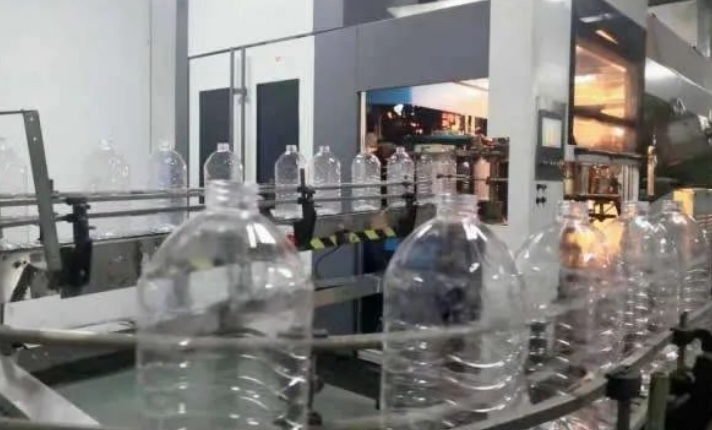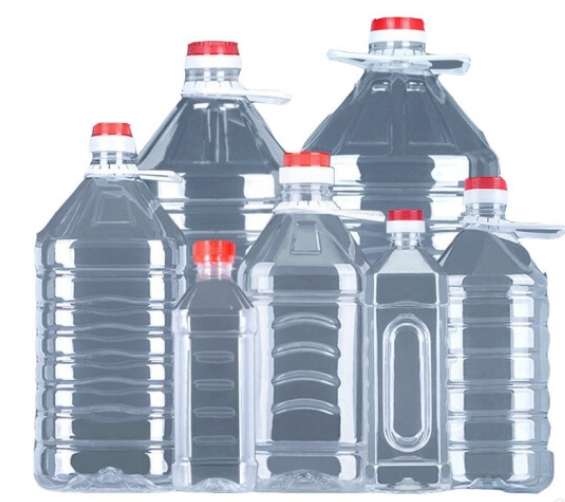What are the future development trends in the field of edible oil packaging? Diversification of materials, polarized specifications, lighter, and safer
2023-12-13
In today’s increasingly fierce competition, packaged edible oils are attracting more attention, and the packaging of edible oils is no longer just a surface decoration for products, but an integral part of the product itself. Therefore, the packaging field of edible oils is also developing with the times.
In the past, oil packaging was simple and traditional. Presently, packaged edible oil products exhibit diverse characteristics, featuring good materials and craftsmanship, stylish and perfect packaging design, which more intuitively highlights brand stories and cultural connotations, and has a stronger visual impact, attracting consumers’ attention and enhancing market competitiveness, and increasing brand value.
On the other hand, the positioning of edible oil products has become more refined, and different packaging forms are used to highlight the characteristics of the products, making it easier for consumers to choose. Many smaller varieties of edible oils are packaged in gift boxes, which have higher packaging requirements, generally using excellent materials and craftsmanship on the basis of simplicity to highlight a high-end feel and reflect the uniqueness of the product.
So, what are the future development trends in the packaging field of edible oils?

Diversification of packaging materials, with a focus on safety
The main packaging materials for edible oils in the market are polyester (PET), polyethylene (PE), glass, tin cans, and composite paper packaging. Meanwhile, recyclable and biodegradable packaging materials are gradually replacing traditional packaging materials.
Tin cans and composite paper packaging materials have relatively higher costs, and some high-end oil products use these forms of packaging. With the reduction in packaging costs brought about by the integration of packaging materials and production, these forms of packaging will gradually be accepted by the market.
Glass bottles occupy an important position in the packaging of edible oils due to their stable material structure and safety and hygiene characteristics. However, most household edible oils are of 5-liter capacity. If glass bottles are used, they are obviously too heavy, and glass bottles are not shock-resistant, making them prone to breakage.
In recent years, with the tendency of high-end edible oil packaging towards small capacities, the design of glass oil bottles has been continuously innovated, becoming more elegant and upscale.
Polyethylene terephthalate (PET) bottles are transparent, allowing consumers to see the color and presence of foreign objects in the oil at a glance. The material has good airtightness and is moderately priced, being the most widely used and mainstream packaging in the market.
Slightly inferior in material is polyethylene (PE), which is white (or sometimes yellow) and opaque. This material has poor airtightness and is not suitable for long-term storage of oil products. It is mainly used for large and medium-sized packaging of catering oils and frying oils in restaurants and canteens. These oils have a large consumption volume, so using this type of packaging barrel is relatively economical and safe.
In recent years, a type of Bag-in-Box (BIB) for edible oil (consisting of multiple layers of PE film composite) has gradually replaced PE barrels. Due to its good sealing, ease of transportation, and single-use hygiene, it has become a better choice for medium-sized packaged oils and catering oils.

Evolution of packaging specifications towards both ends
With the advancement of living standards, changes in dining habits, the growing trend of eating out and ordering takeout are gradually spurring the growth of the catering industry. At the same time, government agencies, enterprises, schools, and the military canteens also account for a certain share, thus the market for catering oils is growing at an unprecedented speed, gradually reaching a market share equal to that of household edible oils.
To reduce costs, facilitate distribution, and enhance practicality, catering oils are primarily in medium packaging, with 10-liter and 20-liter sizes gradually being accepted by the market.
Small-packaged edible oils generally refer to finished oils with packaging specifications of 5 liters or less. With the millennials becoming the main consumer group, small families, young professionals, and the working class no longer require large barrels of edible oil, and healthy and high-end small-packaged edible oils have become popular options. The segmentation of the market is driving the packaging of edible oils towards a trend of medium packaging and even smaller packaging. There will be limited further development space for 5-liter packaged oils in terms of overall volume.
To meet the varied nutritional needs of different consumer groups, the market has introduced various forms of small bottled and combo-packed oils, such as 700ml and 900ml bottled oils. The packaging of edible oils is moving towards smaller quantities to satisfy consumers’ demand for “freshness”. The variety of edible oil packaging in specifications of less than 5 liters has significantly increased, with almost all major oil brands offering multiple sizes ranging from 0.5 liters to 5 liters.
As the population structure changes and lifestyles evolve, the concept of “balanced nutrition, rotating between good oils” will gradually become deeply ingrained, driving the market’s demand for combined packaged oils. Packaged oils in small bottles combo-packs will also be a future development trend.

Gradual reduction of the weight of oil bottles
Through innovative bottle structure design and blow molding technology, 5-liter PET bottles for edible oils have reduced in weight from 130 grams in 2000 to 100 grams at present, and even 95 grams, representing a 27% reduction. This reduces production costs while contributing positively to the sustainable development of the PET industry as the bottles can still meet production and distribution requirements under nitrogen filling conditions. With consumers and customers increasingly demanding more sustainable plastic product lines, reducing the weight of PET bottle containers proves the sustainability practice at the management decision level. Sustainable development is not just a trend, but the essence of the plastic industry’s road forward.
Integration of packaging materials and edible oil production
In the face of fierce competition in the edible oil market, ensuring product quality and reducing costs are necessary means for edible oil companies to enhance their product market competitiveness.
To reduce equipment investments, small-scale edible oil companies often pump edible oils using purchased packaging materials. Light and fragile goods, these packaging materials result in high transportation costs, with low brand influence and relatively high production costs, weak product market competitiveness, and difficult business survival. Additionally, containers may get contaminated during transportation.
As the scale of edible oil companies grows and the technological gap between domestic packaging machinery and foreign machinery gradually narrows, fat and oil production companies have been able to acquire cost-effective packaging equipment, integrating packaging materials and production lines. This has effectively reduced production costs, achieved seamless integration between packaging materials and production lines, and eliminated the secondary pollution during transportation.
Strengthening restrictions on the content of plasticizers in packaging materials
Plastic packaging, being a common form of packaging for edible oils, has a certain impact on food safety. Phthalates are common plasticizers used in plastic food packaging materials and are highly prone to leaching and volatilizing into edible oils. During storage and aging of plastic packaging, these plasticizers continue to accumulate in the edible oils. If the hygiene standards of the packaging materials are not up to par, the plasticizers in edible oils may exceed the limits, affecting human health.
The harm of plasticizers to the body is not an acute poisoning reaction, but akin to the effects of “environmental hormones”, leading to endocrine disruption in the body and damage to biological functions, with hidden harm.
With the growing awareness of food safety and catalyzed by incidents involving plasticizers, materials made from PVC, which uses more plasticizers, have quietly exited the edible oil market.
The trend towards implementing a traceability system with “one product, one code”
The revised “Regulations for the Implementation of the Food Safety Law of the People’s Republic of China,” effective from December 1, 2019, has strengthened food safety supervision and required food production and operation entities to establish a food safety traceability system.
In the face of edible oil processing enterprises that play a crucial role in ensuring the food safety of 1.4 billion citizens, food safety traceability is no longer just about ensuring the safety of “oil”, but more about the safety traceability requirements for any materials that come into contact with food, including food packaging.
Faced with a massive consumer commodity related to people’s livelihood, how to present traceability information to consumers visually has become a matter of innovation for edible oil production and operation enterprises, and the introduction of a traceability system with “one product, one code” has become a trend in the management of edible oil food safety.
In conclusion, as environmental protection and food safety standards continue to improve and market competition intensifies, there are increasingly diverse demands for the convenience, flexibility, and safety of product use. Objectively, the requirements for the packaging of edible vegetable oils are becoming higher, with stricter requirements for the safety of packaging materials, environmental protection, and usage quantities.




